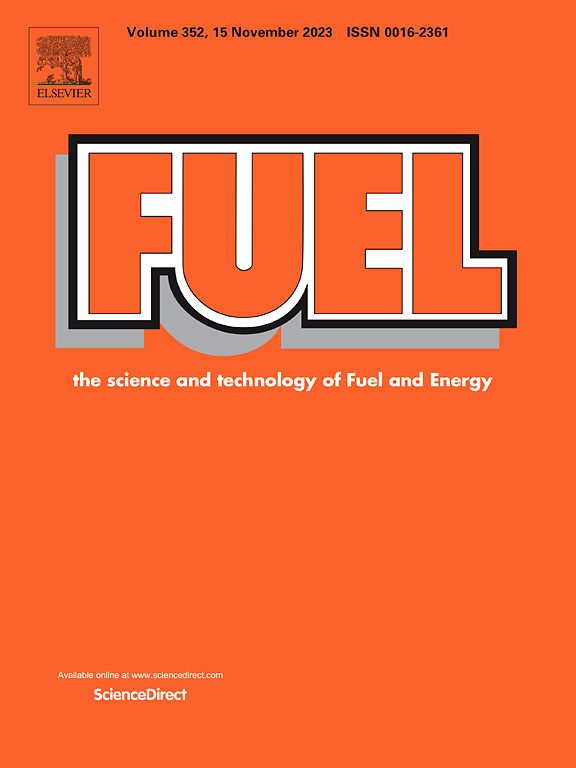模拟质子交换膜燃料电池堆电压不一致的演变:温度和氧气过剩比的依赖关系
IF 7.5
1区 工程技术
Q2 ENERGY & FUELS
引用次数: 0
摘要
电池间的不一致性已经成为商业质子交换膜燃料电池(PEMFC)堆叠的主要性能因素。然而,当前的运行管理研究强调堆栈的总体输出性能,而忽略了对单元间不一致性的系统分析。为了解决这一研究空白,通过对电压不一致-电压(CV-V)模型中系数α和β随运行条件的变化进行建模,深入研究了电压不一致的演变。在演化模型中,系数α和β与温度呈二次多项式关系,与氧过剩比(OER)呈指数函数关系。利用两个商业栈的实验数据验证了模型的有效性。验证结果表明,温度相关CV(T)模型在预测动态温度变化下的电压不一致性方面具有优异的性能(RMSE = 0.031),比CV(50)表达(RMSE = 0.081)提高了61.73%。此外,OER进化模型CV(OER)在动态OER条件下估计电压不一致性的RMSE仅为0.0077,与CV(2.0)表达式(RMSE = 0.016)相比,误差减少了51.88%。这些发现为估计实际PEMFC系统的电压不一致性提供了重要的见解。本文章由计算机程序翻译,如有差异,请以英文原文为准。

Modelling the evolution of voltage inconsistency in proton exchange membrane fuel cell stacks: Temperature and oxygen excess ratio dependencies
Cell-to-cell inconsistency has emerged as a predominant performance factor in commercial proton exchange membrane fuel cell (PEMFC) stacks. However, prevailing operation management studies emphasize aggregate stack output performance, while neglecting systematic analysis of inter-cell inconsistency. To address this research gap, an in-depth investigation of the voltage inconsistency evolution is conducted by modeling the variation of coefficients α and β in voltage inconsistency-voltage (CV-V) model with respect to operating conditions. Regarding the evolution model, both coefficients α and β have been found to exhibit the quadratic polynomial relationships with temperature, while demonstrating exponential function relationships with the oxygen excess ratio (OER), respectively. Experimental data from two commercial stacks are employed to confirm model effectiveness. Verification results indicate that the temperature-dependent CV(T) model achieves superior performance (RMSE = 0.031) in predicting voltage inconsistency under dynamic temperature variations, representing a 61.73 % improvement over CV(50) expression (RMSE = 0.081). Furthermore, the OER-evolutionary model CV(OER) yields an RMSE of only 0.0077 in estimating voltage inconsistency under dynamic OER conditions, corresponding a 51.88 % of error reduction compare to the CV(2.0) expression (RMSE = 0.016). These findings offer critical insights on estimating voltage inconsistency for the real-world PEMFC systems.
求助全文
通过发布文献求助,成功后即可免费获取论文全文。
去求助
来源期刊

Fuel
工程技术-工程:化工
CiteScore
12.80
自引率
20.30%
发文量
3506
审稿时长
64 days
期刊介绍:
The exploration of energy sources remains a critical matter of study. For the past nine decades, fuel has consistently held the forefront in primary research efforts within the field of energy science. This area of investigation encompasses a wide range of subjects, with a particular emphasis on emerging concerns like environmental factors and pollution.
 求助内容:
求助内容: 应助结果提醒方式:
应助结果提醒方式:


